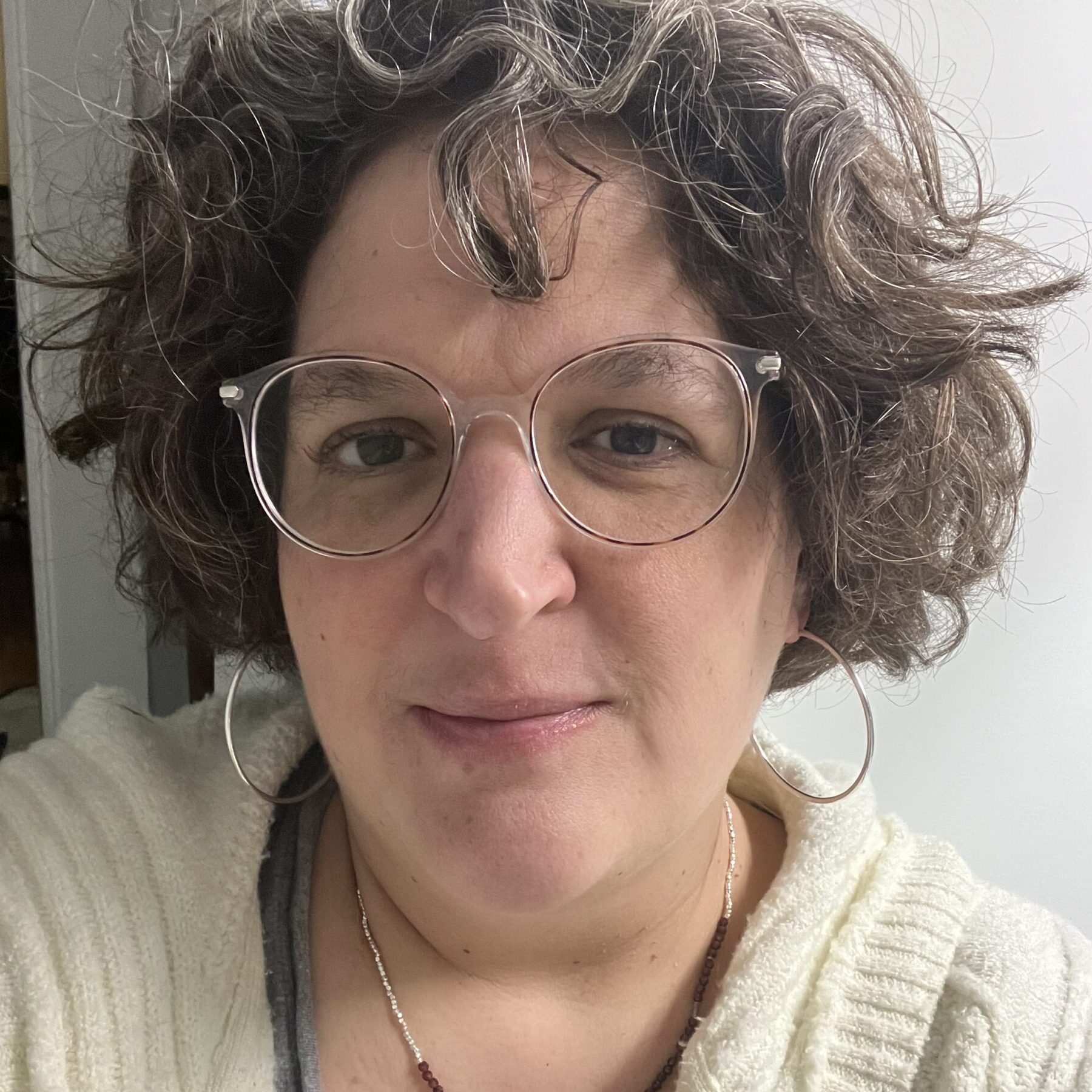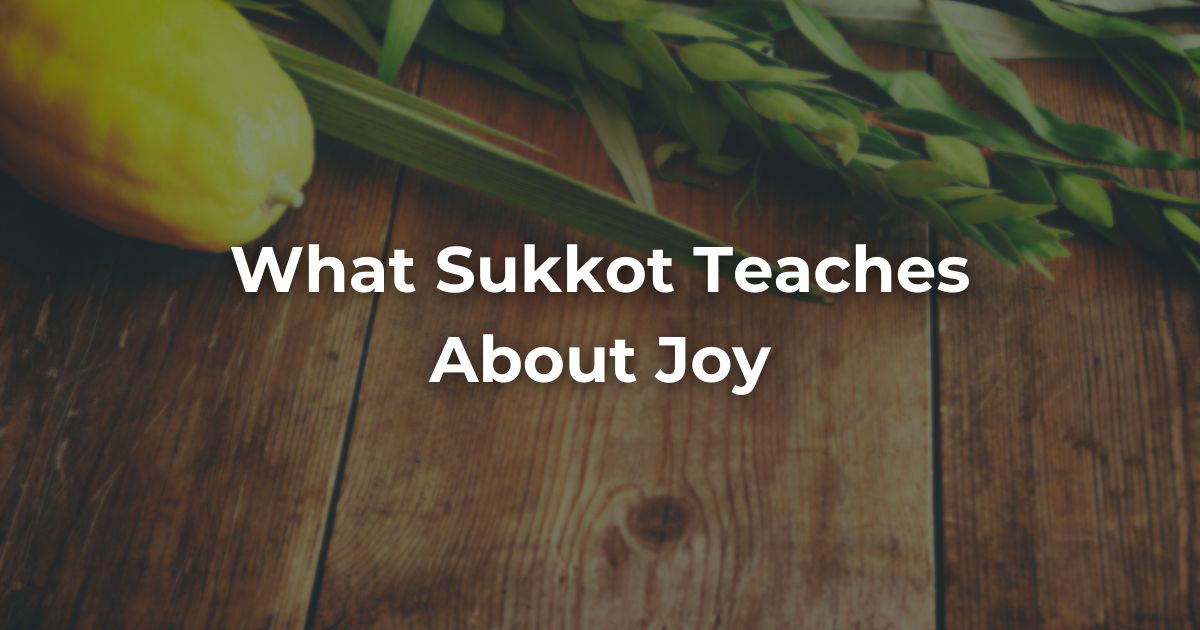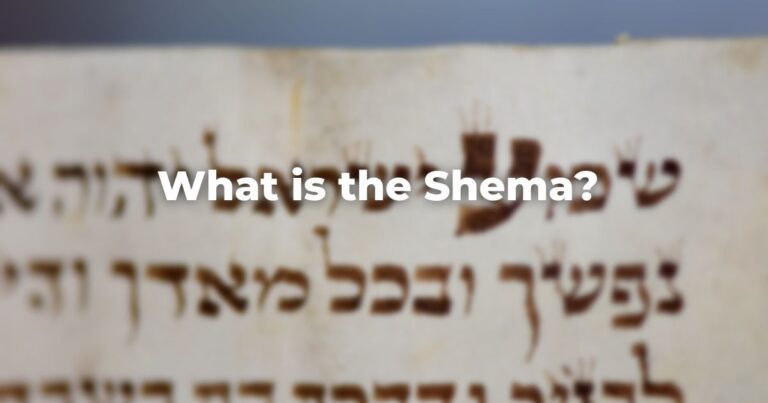The first time I sat in a sukkah was in Chicago, on the first night of Sukkot. I was 19, and it was freezing. Although I was at a loss about various details of the holiday—why were doing this, exactly?—it was magical. Candles glowing in the corner of the sukkah created intimacy; sitting on plastic folding chairs, we laughed as we squeezed to make room at the table, trying to avoid cracks in the pavement. As we said, after kiddush, the blessing over the commandment to dwell in the sukkah, ritual and nature inaugurated our makeshift temporary home.
Despite—or because of—the uneven ground, and the imperfections of a holiday meal that is by definition unpredictable, I was totally immersed in the sensations of the holiday. I reveled in hearing families around the neighborhood chatting, and spontaneously breaking out into an uproarious melody: “VeSamachta bechagekha vehayita akh sameach!” “You shall rejoice in your festival, and you shall be completely happy” (Deuteronomy 16:15). These moments were instantly seared in my memory. That Sukkot was the first time I truly felt part of the Jewish people.
Sukkot is called zman simchateinu, the season of our rejoicing. It serves as a coda at the end of the marathon of the High Holiday season. After fearing judgement and praying for mercy, after we consider the fates unknown in the next year and the irreparable losses of the preceding year, we shift our focus: we wake up after Yom Kippur, grab a hammer and nails, and build a sukkah! We decorate it, adorn it, and invite guests, both those of flesh and blood—our friends, families and neighbors—as well as the ancient souls of our mythic ancestors, the ushpizin.
For many reasons, Sukkot is a time to get out of our heads a little bit: after the preceding weeks of intense self-reflection and teshuva, we go outside, literally. We contend with the elements; we wave the lulav and grip the etrog, smells wafting.
Joy is a peculiar emotion. Happiness, a word often used interchangeably with joy, sounds flat, one dimensional. Joy is intense and complex. Zadie Smith describes it as a “strange admixture of terror, pain and delight.” C.S. Lewis wrote in his 1966 book Surprised by Joy: The Shape of My Early Life: “I doubt whether anyone who has tasted it would ever, if both were in his power, exchange it for all the pleasure in the world. But then Joy is never in our power and pleasure often is.”
Sukkot teaches us each year how little is in our power. We can’t plan for the weather; we are not at our well-established Shabbat tables, with crisp tablecloths and shining place settings. We schlep our food outside, somehow, without tripping in the dark. We manage to eat challah and honey despite circling bees, wind threatening to blow our napkins away. We are all supposed to dwell outside of our comfort zone. In fact, the very first page of the Talmud’s tractate on Sukkot says the essence of Sukkot is to “emerge from your permanent dwelling and and reside in your temporary dwelling” (TalmudReferring to one of two collections, the Jerusalem and Babylonian Talmuds, edited in the 6th century, that contains hundreds of years of commentary, discussion, and exploration of the ideas in the Mishnah. One could describe it as Mishnah + Gemara = Talmud Read more Bavli Sukkah 2a).
It is often said that we read Ecclesiastes on Sukkot in order to grapple with the impermanence of life, much like our sukkot. Today the horror and grief of October 7th and the ensuing terrible war looms over the season of our rejoicing. The seemingly endless nightmare reminds us that joy is ephemeral, and for that reason can be scary.
But holding it at bay to avoid feeling further loss robs us of not only our present joy, but also future memories that will be a balm. Those memories will pull us towards a deep joy in our shared fate. That sukkah when I was 19 planted a feeling of togetherness and community deep inside me. Since October 7th, I’ve felt called to seek out that feeling and form connection, again and again. I look forward to feeling joy and seeing the stars through the schach this Sukkot season.
Author
-

Rachel Bloch is a rabbinical student at Hebrew College with interests in halacha, pastoral care and education and is a proud parent of two young adults. Prior to rabbinical school, Rachel worked as an information architect and has degrees in math and library science.
View all posts




